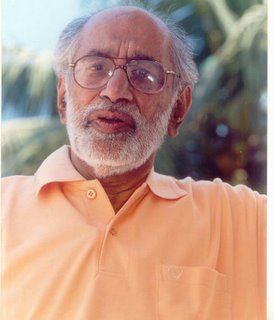C.S. Lewis along with J R R Tolkein are the two authors who hugely influenced fantasy writing in the 20th century. Peter Jackson's adaptation of Lord of The Rings (LOTR) has now become the standard against which all such fantasy films will be measured in the near future. This first film in the Narnia series is in many ways more difficult to visualise than LOTR, especially because a large number of live action scenes have to be mixed with animation.
Narnia was released by Disney amid a lot of hype about its allegorical content. But kids unaware of its sublime messages and intellectual baggage are the ones most likely to enjoy the movie.
I haven't read the book, but some of the background against which the kids' passage to Narnia is set is in more detail in the film than in the book, apparently. Four children of the Pevensie family of London are packed off to the countryside when Germany begins the bom
 bing of the city during World War II. Jim Broadbent appears early in the film in the role of the children's professor uncle who owns a large mansion full of empty spaces into which the children move in. Old, mellow and kind hearted, this is a role Broadbent can now perform with his eyes closed. And he seems the only one initially to believe in Narnia ironically when Susan and Peter - the two older kids - are disinclined to believe in Lucy's tale of the world hidden in the wardrobe. Edmund, meanwhile, is already caught up in the battle between good and evil.
bing of the city during World War II. Jim Broadbent appears early in the film in the role of the children's professor uncle who owns a large mansion full of empty spaces into which the children move in. Old, mellow and kind hearted, this is a role Broadbent can now perform with his eyes closed. And he seems the only one initially to believe in Narnia ironically when Susan and Peter - the two older kids - are disinclined to believe in Lucy's tale of the world hidden in the wardrobe. Edmund, meanwhile, is already caught up in the battle between good and evil.Lucy's passage into Narnia, the first of the memorable scenes in the movie, is captured in a series of breathtaking shots. A promise is made here to reveal a new land of wonder and magic, but then that is reneged. The children's search for Mr Tumnus and Edmund, both captured by the White Witch, especially the run through the tunnels and the snow-capped cliffs, is too much like LOTR. Lucy's scenes with Tumnus are some of best in the movie, the two really playing off each other.
The children finally find Aslan, flowing mane, a deep voice (Liam Neeson) and all, just as he is trying to regain Narnia from the White Witch who has banished the land to an everlasting winter. His death, I thought came too quick, just a few scenes after we get to see him for the first time. It's a bit like there is lot of talk of Aslan in the first half and then he appears and is almost as quickly knocked off.
Nevertheless, his sacrifice is superbly shot and performed in the scene that Tilda Swinton is really at her evil best and delivers probably the film's best lines. Compared to that, Aslan's lines, if I may call them that, are really lame.
Georgie Henley potrayal of Lucy is rivetting. She is not very pretty, but is cute. She tramples on the snow rather than walk on it. It's a restrained performance far better than any other on screen. The only who actually holds his own against Georgie is Skandar Keynes, partly because his conflict between the Witch's tempting offer and the good within him is so ingrained into the movie. His weakness for sweets, the gleam in his eye as he yearns for power, his bitterness in being separated from his father, Keynes really bites into whatever potential the role offers. Compared to the performances from the younger kids, the older ones played by Anna Popplewell and William Moseley are trite.
The battle scenes are not much of an improvement from Braveheart. It's hard to explain what could have been done better though.
I watched the movie in a theatre full of adults who seemed to be tremendously enjoying the movie and ultimately I believe this is the greatest success of the film: To make something which children see one way and the adults another.












